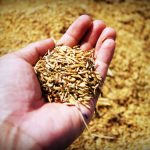When a lawn is dead, is it truly gone? No matter how hopeless the situation, there is always hope. Dead lawns are far from uncommon, but that doesn’t mean you should let it languish as it is.
Here, we’re going to look at the steps to figuring out what went wrong (if you don’t already know), and the steps to take to not only resurrect your dead lawn but to future-proof it, as well. The grass is greener on the other side of these following steps.
Learn why it’s dead in the first place
There are a lot of potential causes for your lawn to have died, and it’s important that you figure out the specific reasons yours has gone the way of the dodo. See here for a list of reasons that might apply and study your own lawn carefully to see the causes.
If there’s been extremely hot weather, it’s likely due to drought, which means that you may need to invest in more efficient watering systems to ensure they stay hydrated. If your ground is waterlogged, it’s probably down to drowning, in which case you may need to aerate and install the drainage system.
Testing the pH of the soil can ensure that it’s good enough ground to support grass in the first place. If it isn’t, you need to correct the pH before you move on.
Start with a clean slate
Scarifying your lawn sounds like an extremely violent step, but it’s not quite as destructive the name might suggest. Much like tilling the soil before you plant a crop, it’s all about getting the obstacles out of the way of what’s going to be your new lawn.
Before you take this step, you should check to see that your lawn isn’t just dormant and that it is well and truly dead, of course.
Then, you use a scarifier to cut through the soil. Not only will this lift up the old, dead grass, but can also help get rid of moss and other debris that might get in the way of the new growth.

Add some fresh life
Next, you lay the foundation of a greener, healthier lawn to come. We’re talking, of course, about the grass itself. Go here if you want to see some good examples of not only high-quality grass seed but also the fertilizer that’s going to help it grow more healthily and bountiful.
Be aware that there are multiple different kinds of grass seeds out there. So choosing one that’s the best fit for the garden will ensure your lawn gets the look that you’re hoping for. Using a grass seed spreader can help you more quickly and evenly distribute the seeds so that you get a much tidier lawn, as well.
Make it easier to take care of
Providing that the issue wasn’t caused by a problem with the ground itself, such as waterlogged or imbalanced soil, the most common reason that grass dies is simple neglect.
To ensure that it doesn’t happen again, there’s a range of steps you can use to make mowing, watering, and feeding the lawn all the easier, as you can see here.
Set your mower blade to the right height to stop weeds without having to use herbicide quite as often, make use of automated water sprinkler systems to make sure you never fall behind the grass’s need for hydration, and schedule your gardening across the week so you don’t have to do it all at once.
Future-proofing your lawn
If you don’t take good care to mow, water, and feed your lawn, it is eventually going to die. However, to make sure that it’s hardier and dry patches are less likely to appear, you can do some research for some great tips on how to improve its general health.
Aerating the lawn, using natural fertilizers, and letting your grass clippings lie to serve as natural mulch will all improve the longevity of your lawn. There are few things quite as effective for improving the health of any greenery as compost, however, so if you’re getting serious about gardening, now is the time to build that compost bin.

The Bottom Line
Lawns require a lot of care to ensure that they remain as healthy as possible. The tips above show how to restore your lawn to life. But if you’re not willing to put in the work to ensure that it’s watered, fed, mowed, and bolstered, you might have to do it all over again. A little effort now saves you from having to make a big effort, later.

